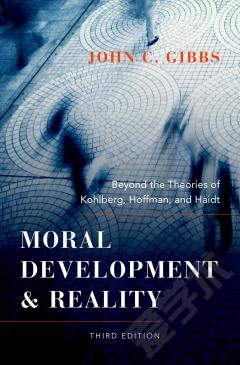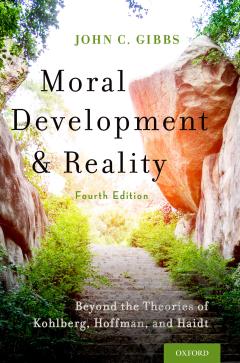Moral Development and Reality —— Beyond the Theories of Kohlberg, Hoffman, and Haidt
----- 道德发展及其现状:探寻科尔伯格、霍夫曼、海特理论背后的深意
Foreword by David Moshman Preface and Acknowledgments About the Author 1. Introduction Social Perspective Taking, Reversibility, and Morality The Right and the Good: The Moral Domain Introducing Chapters 3 through 10 2. Beyond Haidt's New Synthesis Three themes Conclusion and Critique 3. "The Right" and Moral Development: Fundamental Themes of Kohlberg's Cognitive Developmental Approach Early Childhood Superficiality Beyond Early Childhood Superficiality Stages of Moral Judgment Development Evaluating Haidt's Challenge 4. Kohlberg's Theory: A Critique and New View Background Kohlberg's Overhaul of Piaget's Phases Adult Moral Development in Kohlberg's Theory A Critique and New View Conclusion 5. "The Good" and Moral Development: Hoffman's Theory The Empathic Predisposition Modes and Stages of Empathy Empathy and Prosocial Behavior: Cognitive Complications and Empathy's Limitations Empathy, Its Cognitive Regulation, and Affective Primacy The Empathic Predisposition, Socialization, and Moral Internalization Conclusion and Critique 6. Moral Development, Moral Identity, and Prosocial Behavior Prosocial Behavior: The Rescue Individual Differences in Prosocial Behavior Conclusion: A Spurious "Moral Exemplar" 7. Understanding Antisocial Behavior Limitations of Antisocial Youths A Case Study 8. Treating Antisocial Behavior The Mutual Help Approach Remedying the Limitations and Generating Synergy: The Cognitive Behavioral Approach Social Perspective-Taking for Severe Offenders 9. Beyond the Theories: A Deeper Reality? Two Case Studies A Deeper Reality? Moral Insight, Inspiration, and Transformation Conclusion 10. Conclusion Revisiting the Issue of Moral Motivation and Knowledge Moral Perception and Reality Appendix References Author Index Subject Index
{{comment.content}}








 京公网安备 11010802027623号
京公网安备 11010802027623号